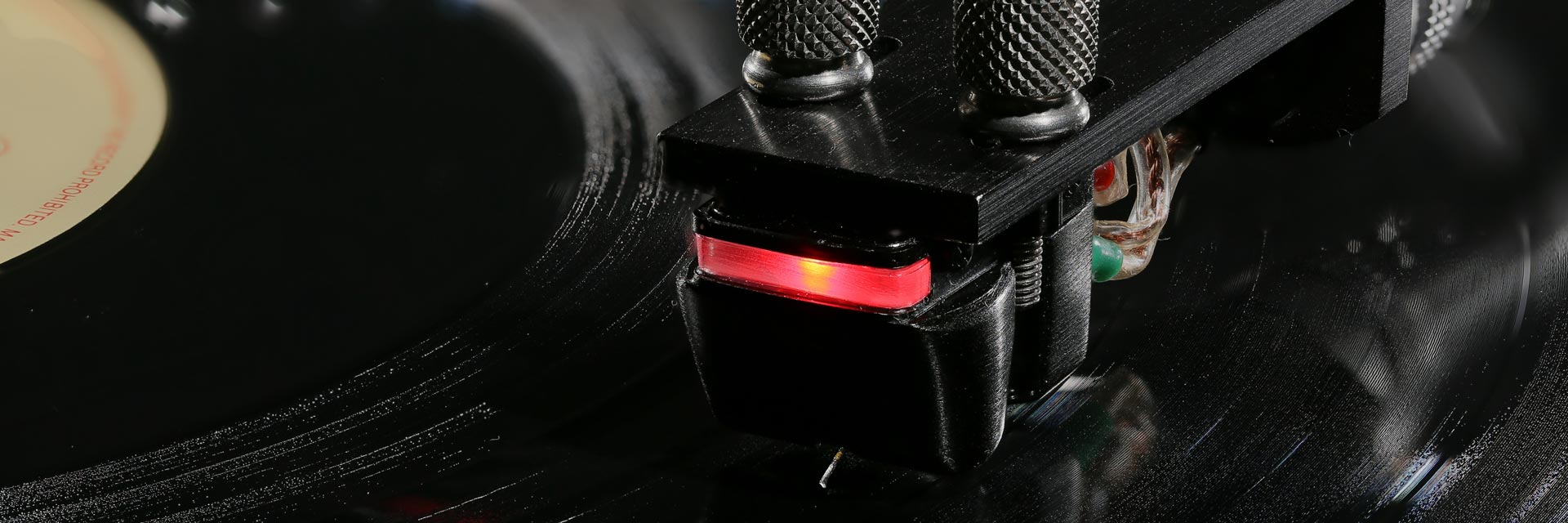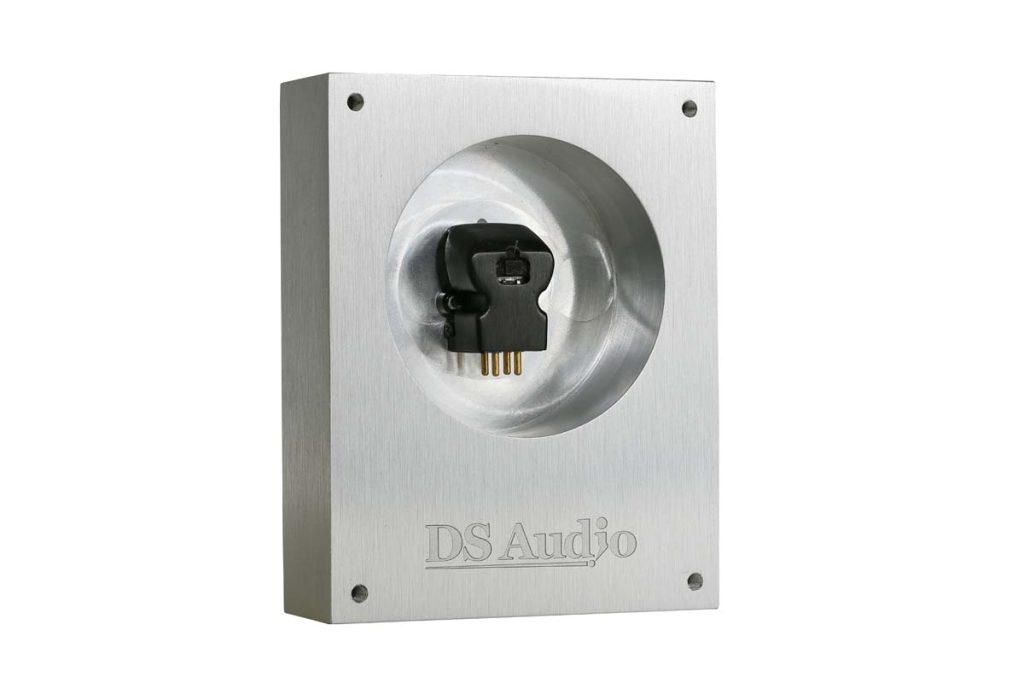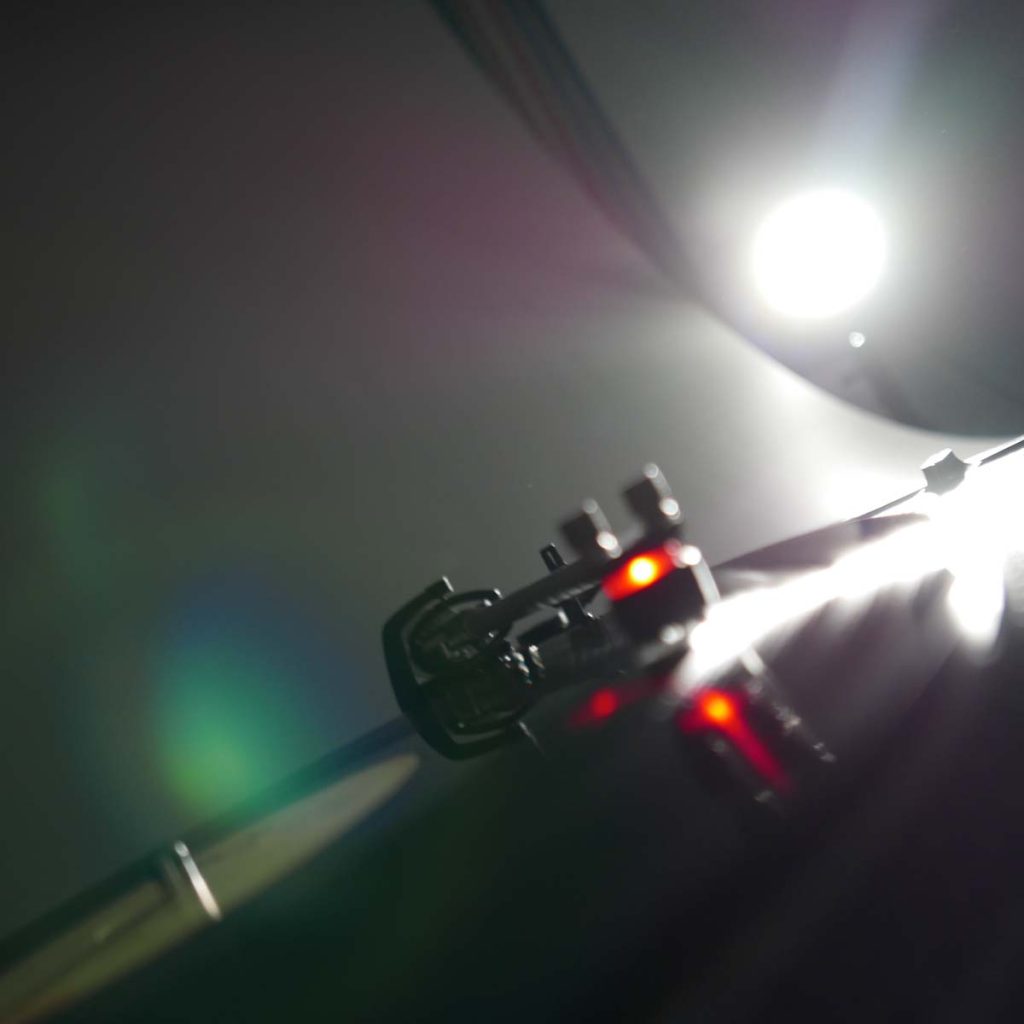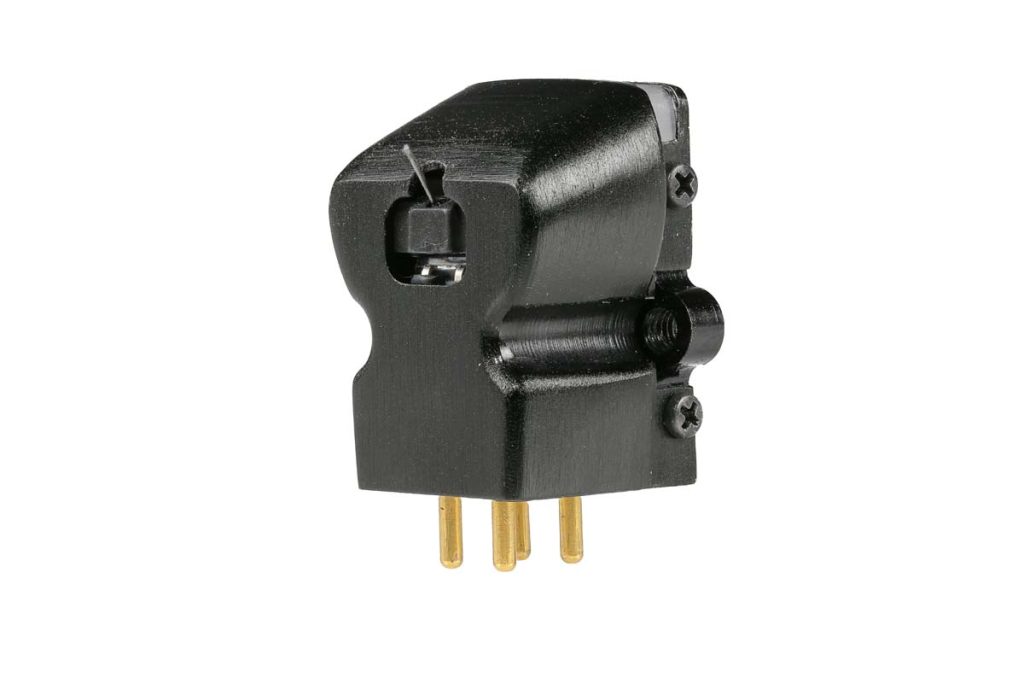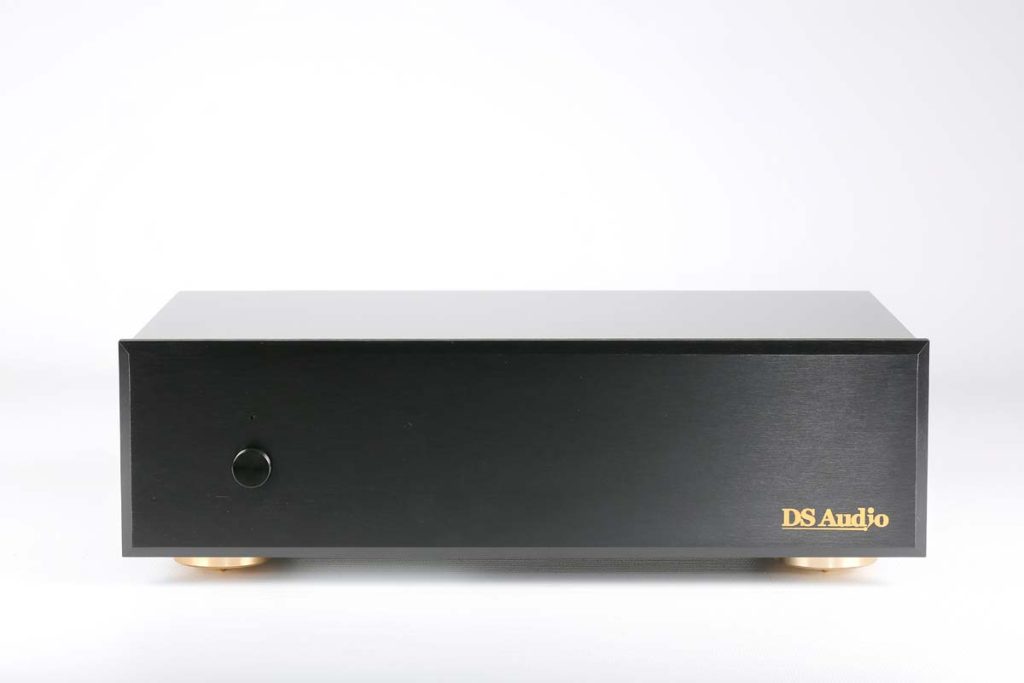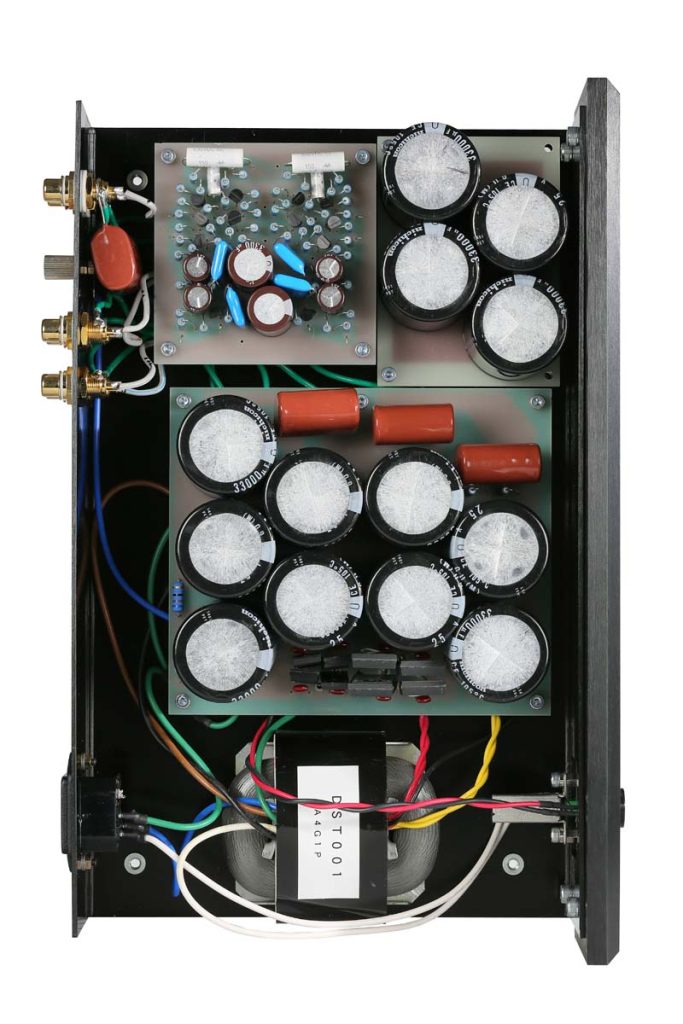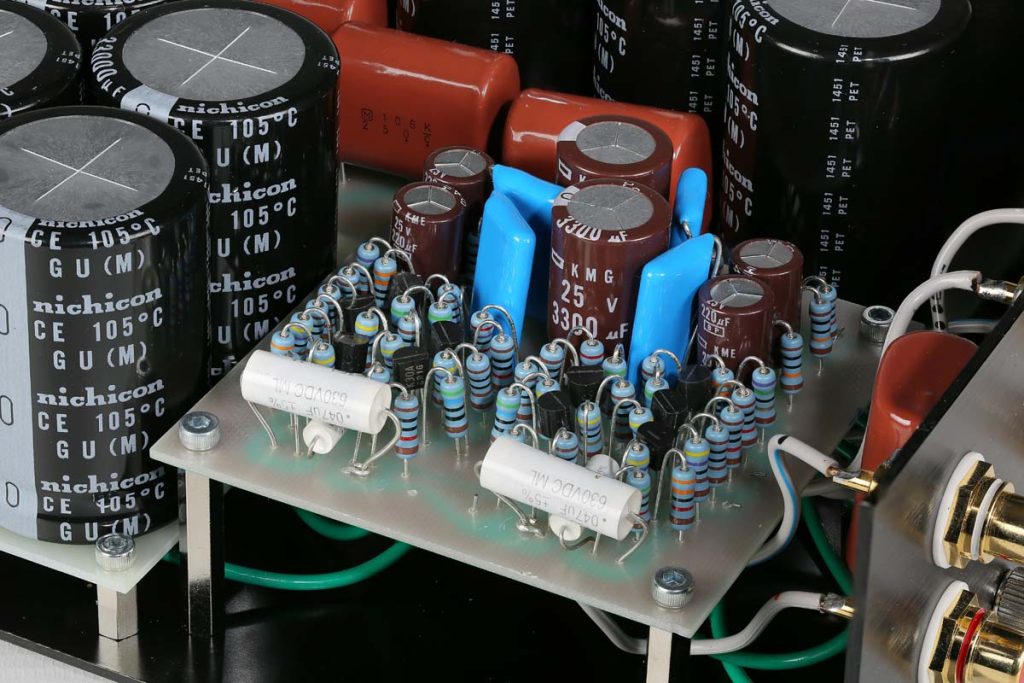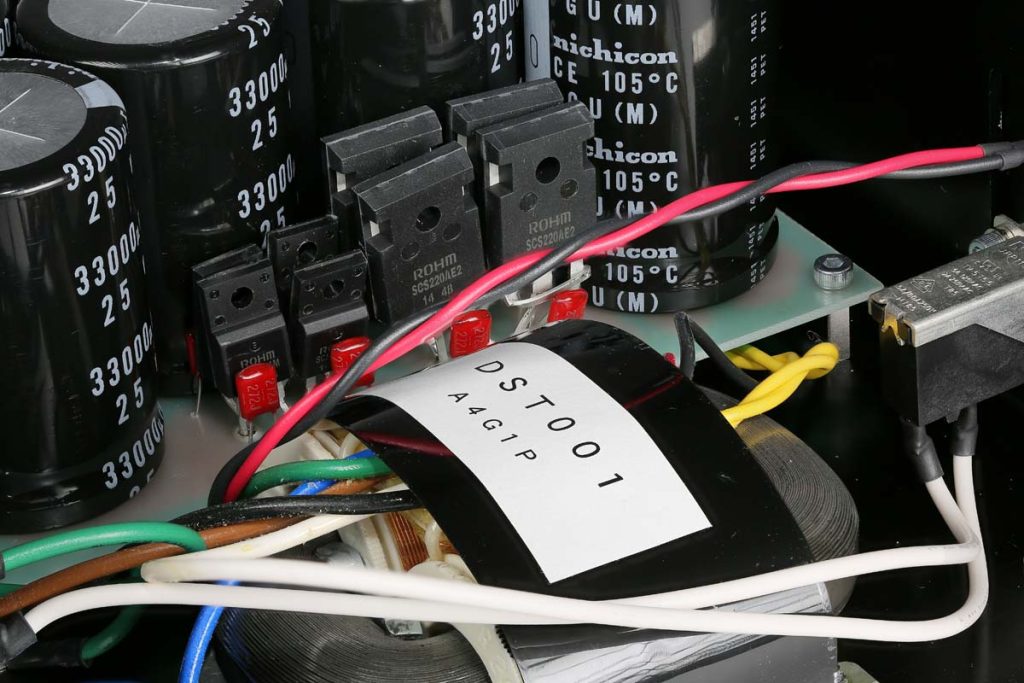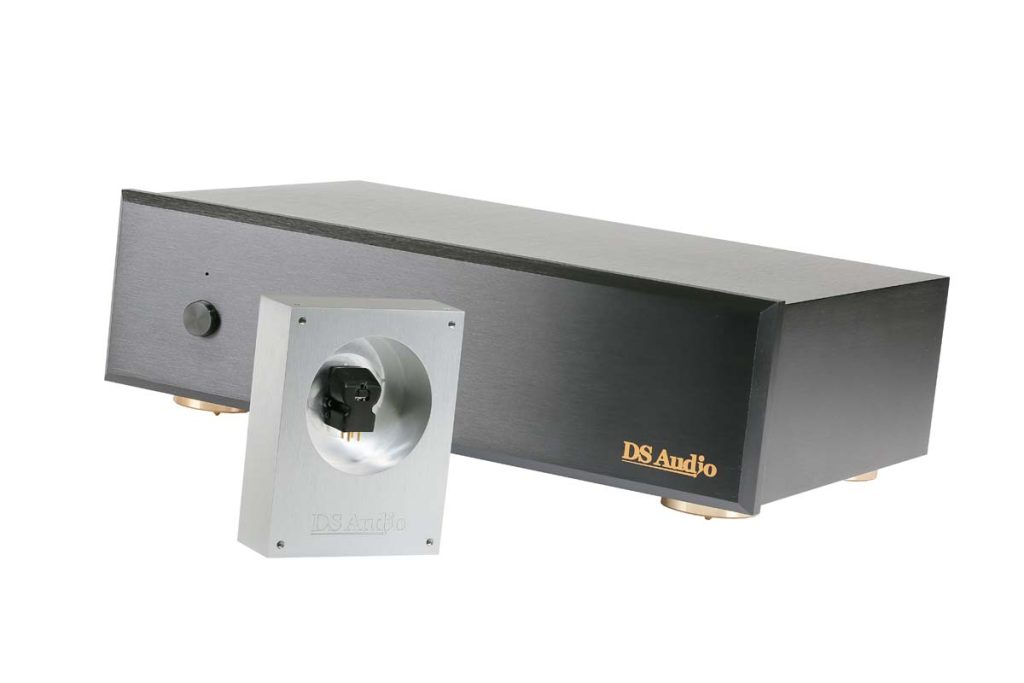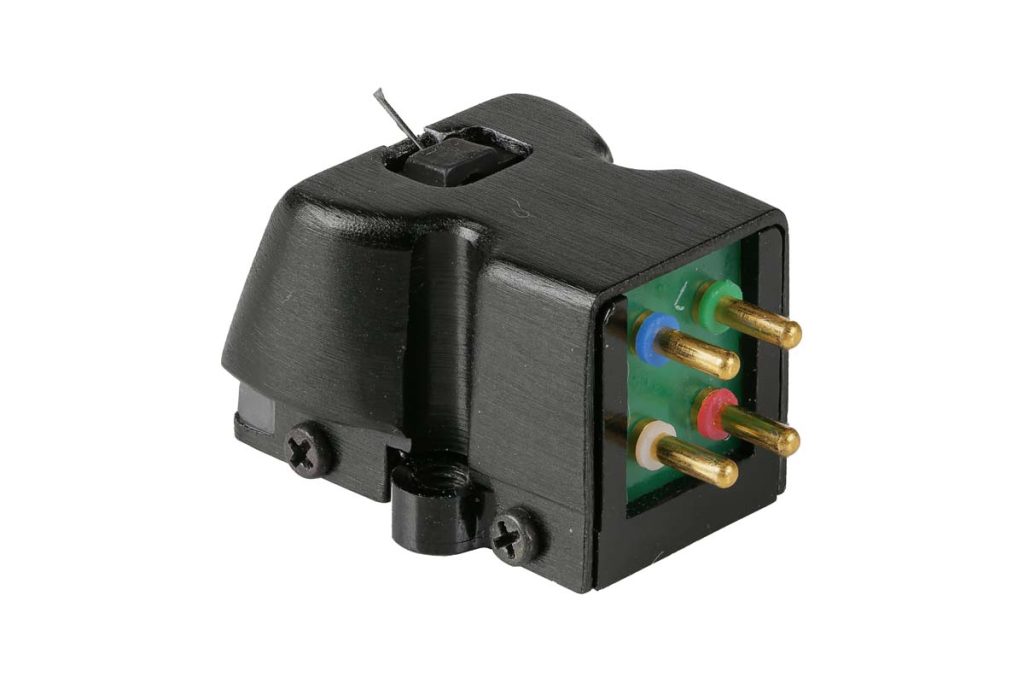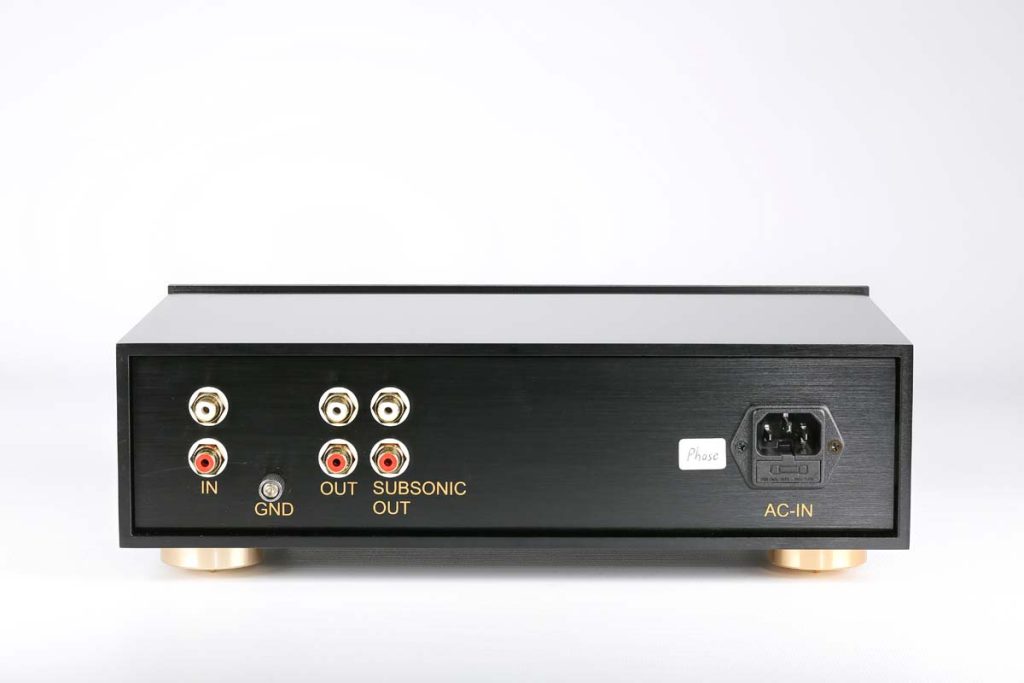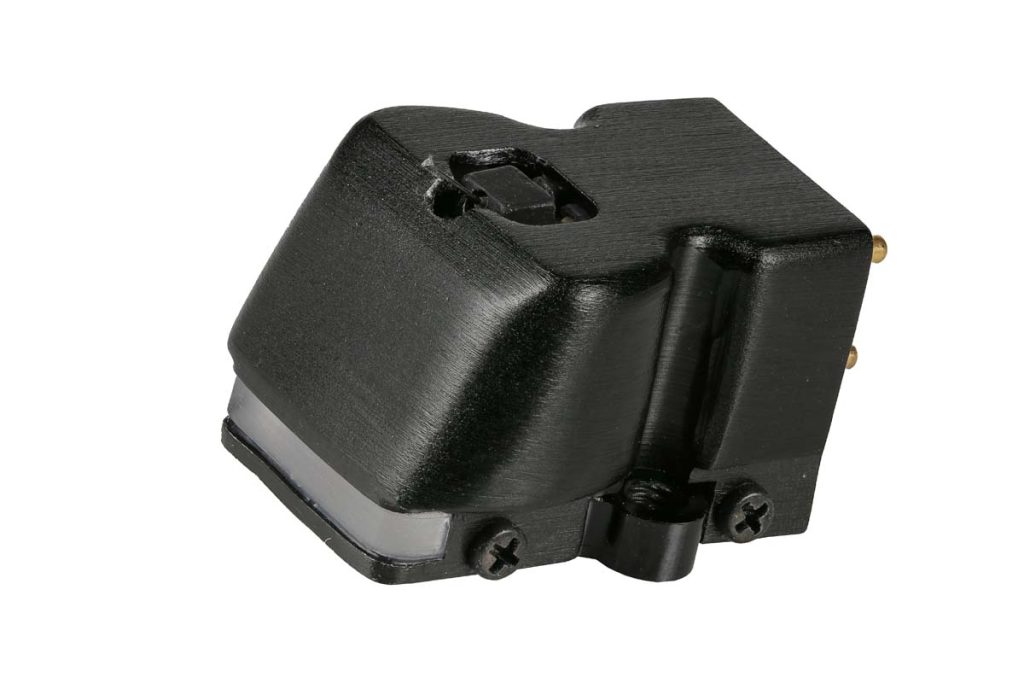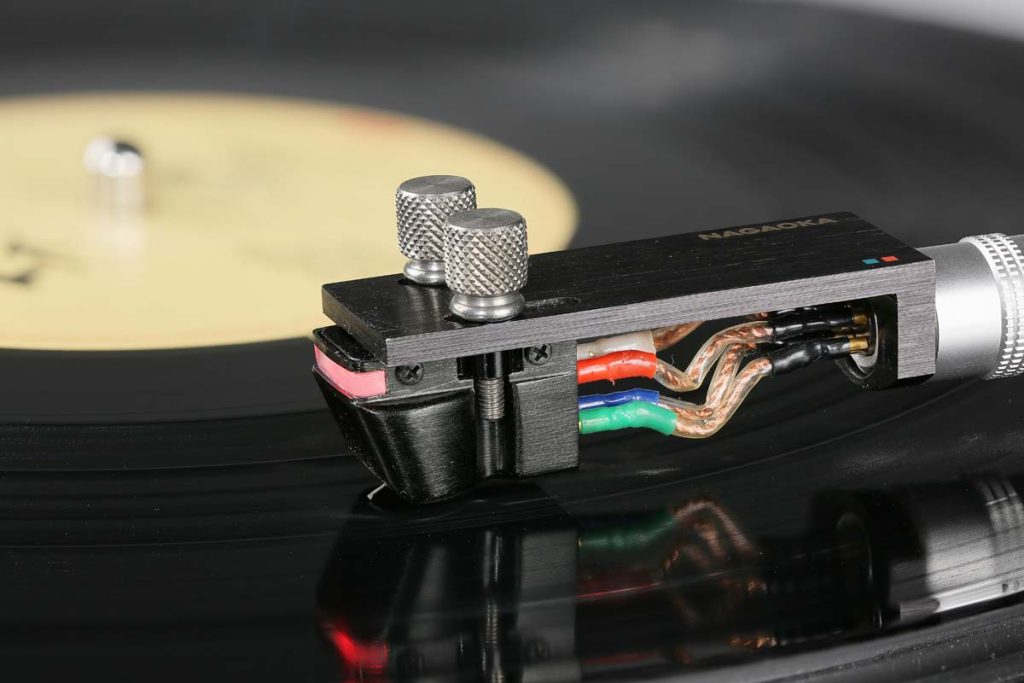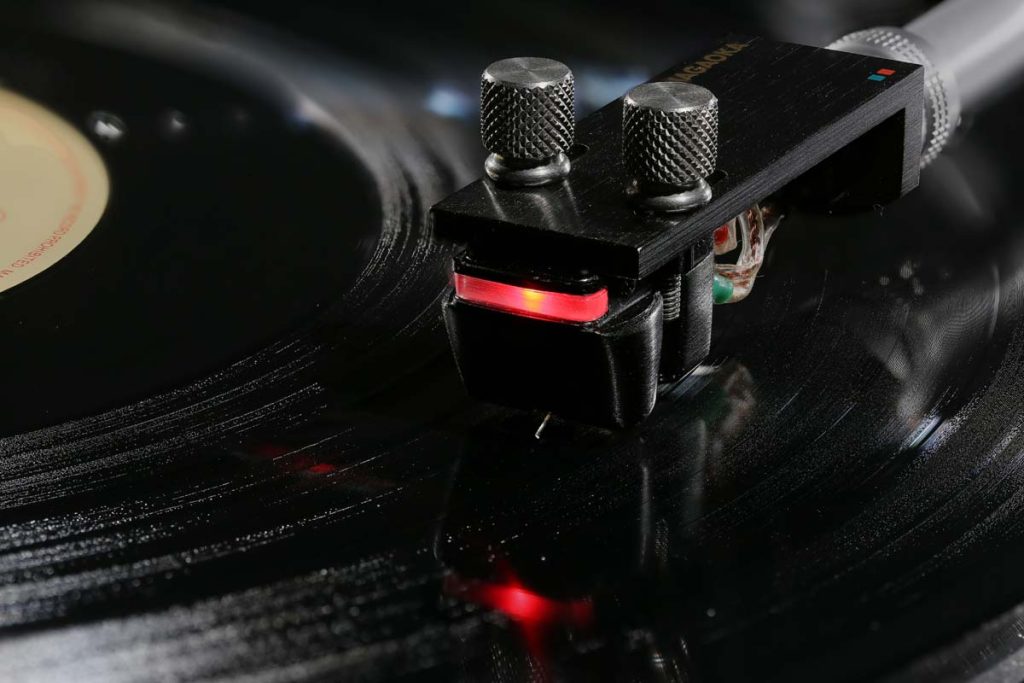The “Nightrider” Returns
Often when you think you’ve seen it all, you get a nice surprise. The DS Audio DS-W1, marking the comeback of the optical cartridge, is a case in point.
If you peruse the latest catalogs issued by cartridge manufacturers, you would be forgiven for thinking that there are just three concepts for cartridge systems: moving magnet (MM), moving iron (MI), and moving coil (MC). And all three have one fundamental thing in common: They work according to the principle of electromagnetic induction. Either a magnet moves in a fixed coil environment (MM) or coils move in a stationary magnetic field (MC). With MI, coils and magnets are fixed, and a moving soft iron component generates the required change in the magnetic field strength in order to generate voltage in the coils.
Perhaps some readers still remember piezoelectric or crystal systems that were used in very reasonably priced turntables but never received any high-end accolades as the sound quality they produced was simply too limited. Old-school analog fans might still be able to cast their minds back to condenser systems (for example, those from Stax), the strain gauge principle (originally from Panasonic, but currently manufactured by Soundsmith), or the first optical cartridge (C-100P). The latter was sold under the high-end label Aurex but manufactured by Toshiba. That all happened in the late 1960s (!), but didn’t really result in any lasting success for the inventor. The reason for that concerned the necessary light source. At the time, it had to be provided using a conventional bulb because LEDs had not yet been invented. The level of heat loss was not trivial, which stood in the way of achieving long-term reliability. That said, the actual principle has so many advantages (see technology box) that, over the course of semiconductor development, it had already become high time for it to be dusted off from storage.
Experienced newcomer
All the credit for this revival belongs to DS Audio, which was just founded in 2014. The company is a subsidiary of Digital Stream Cooperation (DSC), which is based near Tokyo. The parent company has been around for 25 years and is in the business of manufacturing high-quality laser-optic components, in particular CD, DVD, and Blu-ray player read heads. What’s more, DSC developed the optical computer mouse with Microsoft. Chances are you have at least one product at home that was developed by this little-known Japanese company. Remarkably, it just so happens that Tetsuaki “Aki” Aoyagi, the 27-year-old son of the company’s founder, is a huge fan of analog playback. In view of this technical background — in particular, the many years’ extensive experience manufacturing high-precision optical components — it seemed like a perfectly logical step to breathe new life into the optical cartridge, which had almost been consigned to the history books, by employing the latest materials and production methods.
Three practical tips
Using the inseparable DS-W1 unit, which consists of the optical cartridge (nicknamed “Nightrider”) and the equalizer/power supply unit, has proved surprisingly straightforward in practice. There are just three things to bear in mind:
1. You must avoid accidentally connecting a conventional cartridge to the EQ unit. The supply voltage, which is carried by the two ground wires of the signal cable to the optical cartridge, would probably melt the delicate coils of an MM or MC system.
2. At the same time, you shouldn’t connect the Nightrider to a normal phono input. The extremely high output voltage of 500 millivolts (in comparison with typical MMs where this is 5 millivolts, and MCs where this is 0.5 millivolts) may cause damage by overloading the phono stage and subsequent components.
3. You need to have a tonearm that separately carries the ground wires for the right and left channels. I can’t actually think of a tonearm right now that I can say for sure this wouldn’t be the case. But if you’re not sure, ask the tonearm manufacturer or a dealer you trust. Other than these three points, the optical cartridge behaves like a totally normal cartridge that you’ve matched with an appropriate phono preamplifier.
The dynamic stylus compliance is not specified, but resonance tests indicate the DS Audio Nightrider is happiest when used in conjunction with medium- to heavy-mass tonearms. An SME Series V, weighing 12 grams, seems to represent the lower limit in terms of effective mass. DS Audio recommends a pleasantly low tracking force of between 13 millinewton and 17 millinewton. At 15 millinewton and with a corresponding antiskating setting during sample tests, my unit accomplished 70 micrometers without any problems; at maximum tracking force, even 80 micrometers can be faultlessly sampled. That indicates the developers have really done their homework, as those kinds of values in no way represent the norm for comparably expensive MC systems, even those from well-established manufacturers.
Equalizer included
The front of the EQ unit just has one on-off switch and a small red LED. The magic really starts to happen when the connected cartridge tells you it’s ready to be used: A red LED on the front lights up in a manner somewhat reminiscent of K.I.T.T., the highly advanced car from the TV series Knight Rider, hence the cartridge’s nickname. On the rear of the EQ unit, you’ll find the input, the ground connection, and two different outputs: one with and one without subsonic filter. This filter doesn’t kick in until below 15 hertz and, due to the optical cartridge’s unusually large bandwidth, only occasionally seems to be necessary. Since you can connect both outputs at the same time, you can create the perfect connection quickly.
From zero to hero
Except for the really bright LED, the cartridge, milled from solid aluminum, actually leaves a rather lackluster impression. But as soon as the boron cantilever with the Shibata diamonds sinks into the groove, it becomes immediately clear that the cartridge is absolutely first class. I’m not exaggerating: As soon as I listen to the first vinyl record late in the day, it immediately dawns on me that this combo has to rank among the top five cartridges I’ve ever listened to. In no way can I say that the DS Audio DS-W1 produces spectacular effects. The optical cartridge is not interested in hyperbole or drama. This is particularly true for the neutral, rather warm fundamental tone that’s not all that different from my own EMT JSD-6. However, I do have to say that the Nightrider unpretentiously, almost nonchalantly, unearths many additional details — even in recordings I’m very familiar with.
Part of this has to do with the virtual space being perfectly illuminated all the way to the far corners at the back. It doesn’t get any better than this. Not to mention the frequency ends. The bass range is reproduced with a seldom (if ever!) heard combination of volume and precision, which means I can hardly wait for the next time the kettledrums will kick in so I can enjoy the astounding amount of nuance and light and shade of the instruments, which in themselves are tonally quite limited. What impresses me the most, though, is the “real” dynamics this cartridge is capable of. Once again, I get the impression that the optical cartridge produces greater contrast between quiet and loud passages than is usual.
The musical performance is produced with a kind of precise effortlessness I’ve never heard before, and it in no way verges on the pedantic despite the discrete attention to detail. It’s astounding how, even with vinyl records I’ve listened to all too often, the Nightrider still manages to uncover nuances I’ve simply never picked up on before. It really doesn’t matter what kind of music you prefer to throw at it — this system is a musically unbeatable, multitalented all-rounder. After playing countless other vinyl records, I feel happily compelled to revise my somewhat premature verdict: The DS Audio DS-W1 optical cartridge has not only secured a place in my personal top five, it is now my absolute personal favorite!
The Technology Behind The DS Audio DS-W1
For each channel in the DS Audio optical cartridge, a type of “light beam” handles converting the cantilever’s movements into electrical voltage: As its names suggests, the process involves the LED (light-emitting diode) emitting a light on two channel-separate photodiodes. Located between the sender and the receiver is a “screen”: a mere 50-micrometer-thick, light-tight and ultralight film with two rectangular cutouts attached to the cantilever. The greater the movement of the cantilever, the more light flows through the screen’s “slits” onto the photoelectric cells and the greater their output voltage. The principle is therefore genuinely analog and can boast a few advantages compared with conventional MM, MI, or MC systems: Because the film on the cantilever weighs considerably less than magnets and coils, the system has an ultralow moving mass. There are no power-induced coils to build up a magnetic field and therefore no counter electromotive force to work against the current flow on the basis Lenz’s law. And the enormous output voltage eliminates the need for a preamplifier stage.
However, the voltage curve produced is particularly advantageous. While the level of induced voltage with MM, MI, and MC systems depends on the frequency (the faster the cantilever moves, the higher the frequency and hence the higher the voltage, too), the voltage curve is not dependent on frequency in optical systems. Only the size of the movement influences the strength of the signal. That means optical cartridge’s developers can implement purely passive RIAA equalization, which in turn only minimally influences the actual signal. The disadvantages are that the LED needs to be supplied with power and the signals of the optical cartridge cannot be processed with a conventional phono preamplifier. Therefore, an external power supply unit is always required.
Accompanying Equipment
Turntables: SME Model 10, Technics SL-1210 Mk2 | Tonearms: SME M2-9R, SME Series V | Cartridges: Audio Technica AT-20SLa Ltd. Ed., EMT JSD-6, Ortofon Quintet Black, Goldring G-2200 | Preamplifier: Bryston BP 25 MC | Power amplifier: Bryston 3B SST | Loudspeakers: Spendor SP100R2 | Rack: Music Tools Alica | Accessories: Shure SFG-2 stylus tracking force gauge, Millennium audio alignment block
Cartridge
DS Audio DS-W1 Optical Cartridge
Functional principle: Cartridge with photoelectric voltage generation | Housing material: milled aluminum | Cantilever: boron rod | Stylus cut: Shibata | Output voltage (1 kHz, output EQ unit): 500 mV | Channel separation: > 20 dB | Stylus compliance: no information | Weight: 6.5 g | Recommended tracking force: 13—17 mN
DS Audio EQ Unit
Functional principle: External power supply unit and equalizer for the DS Audio DS-W1 | Input: one unsymmetrical (cinch) plus ground connection | Outputs: two unsymmetrical (cinch) of which one has a subsonic filter | Dimensions (W/H/D): 32.5/10/21 cm | Weight: 5.5 kg | Warranty period: two years | Price for set: €8,800 | Exchange system price: €3,900
High Fidelity Studio
Dominikanergasse 7
86150 Augsburg
Germany
Phone +49 821 37250

